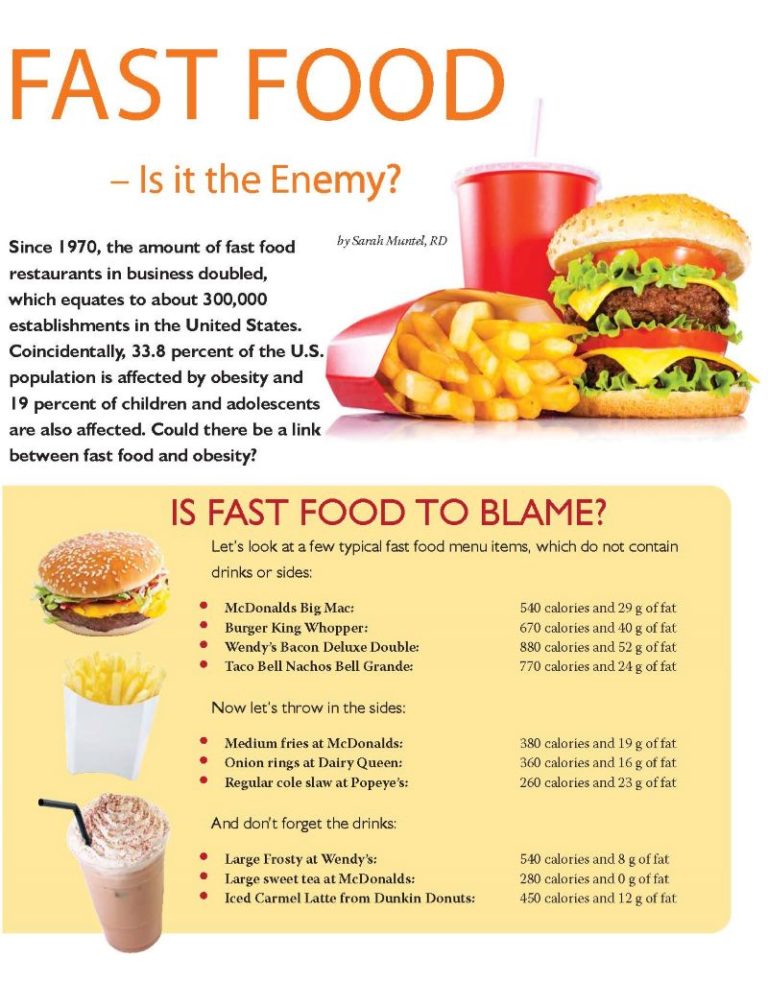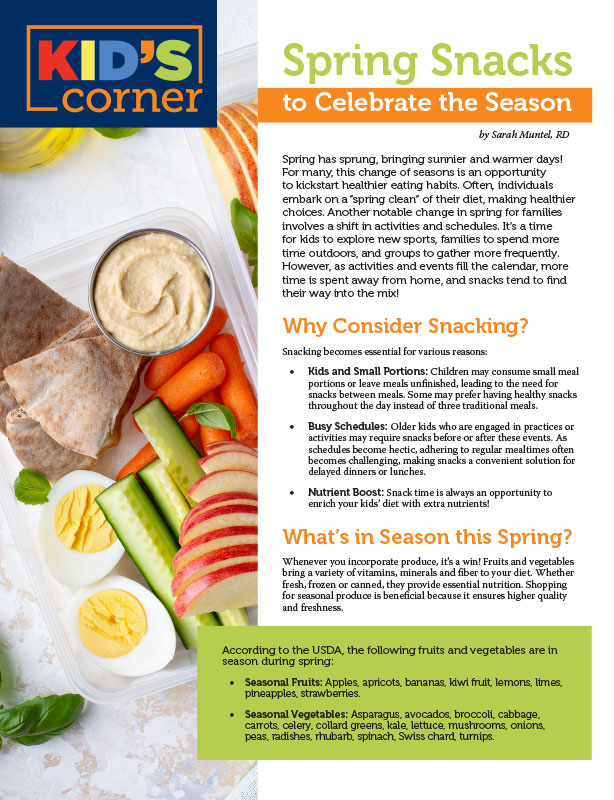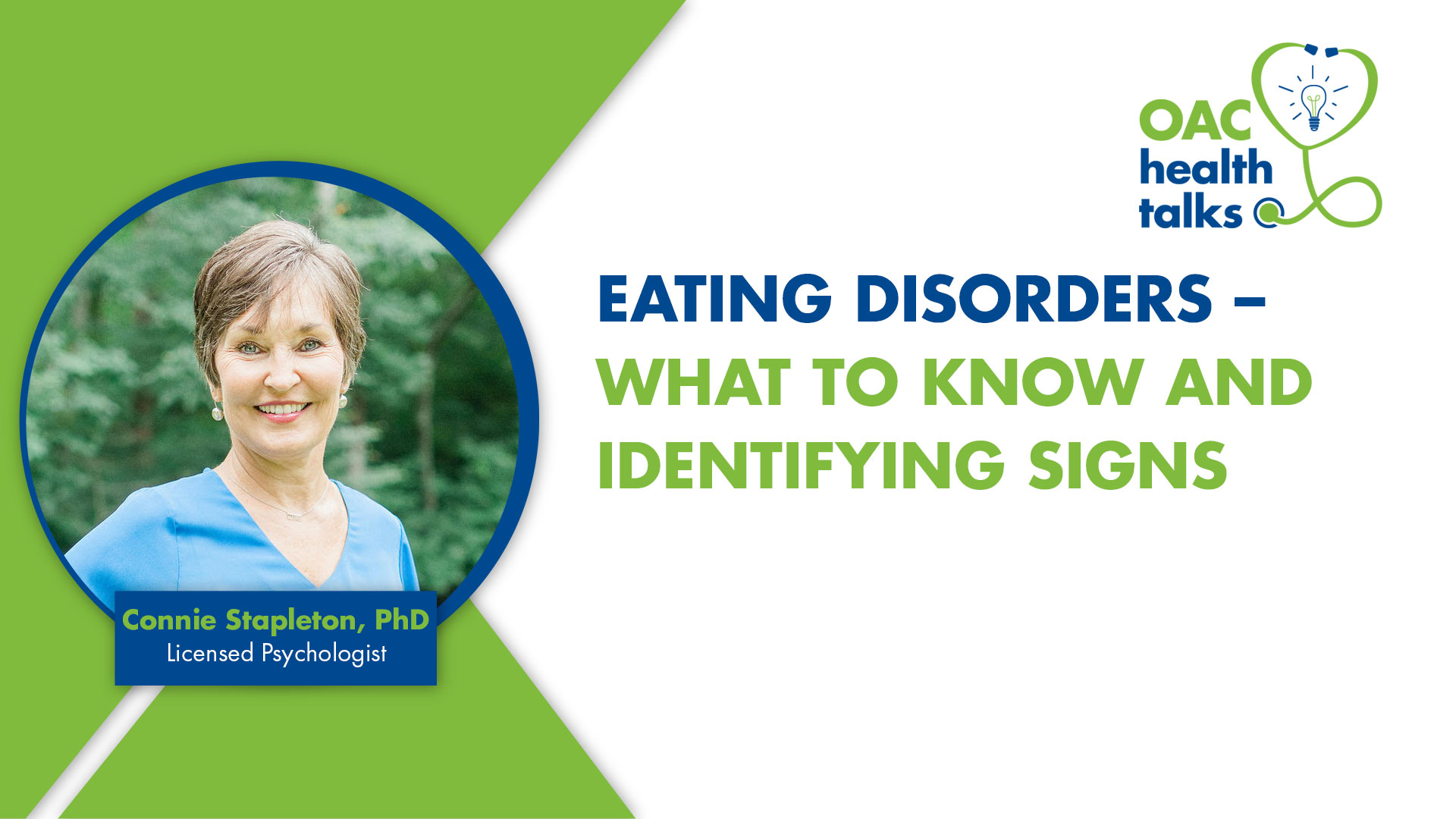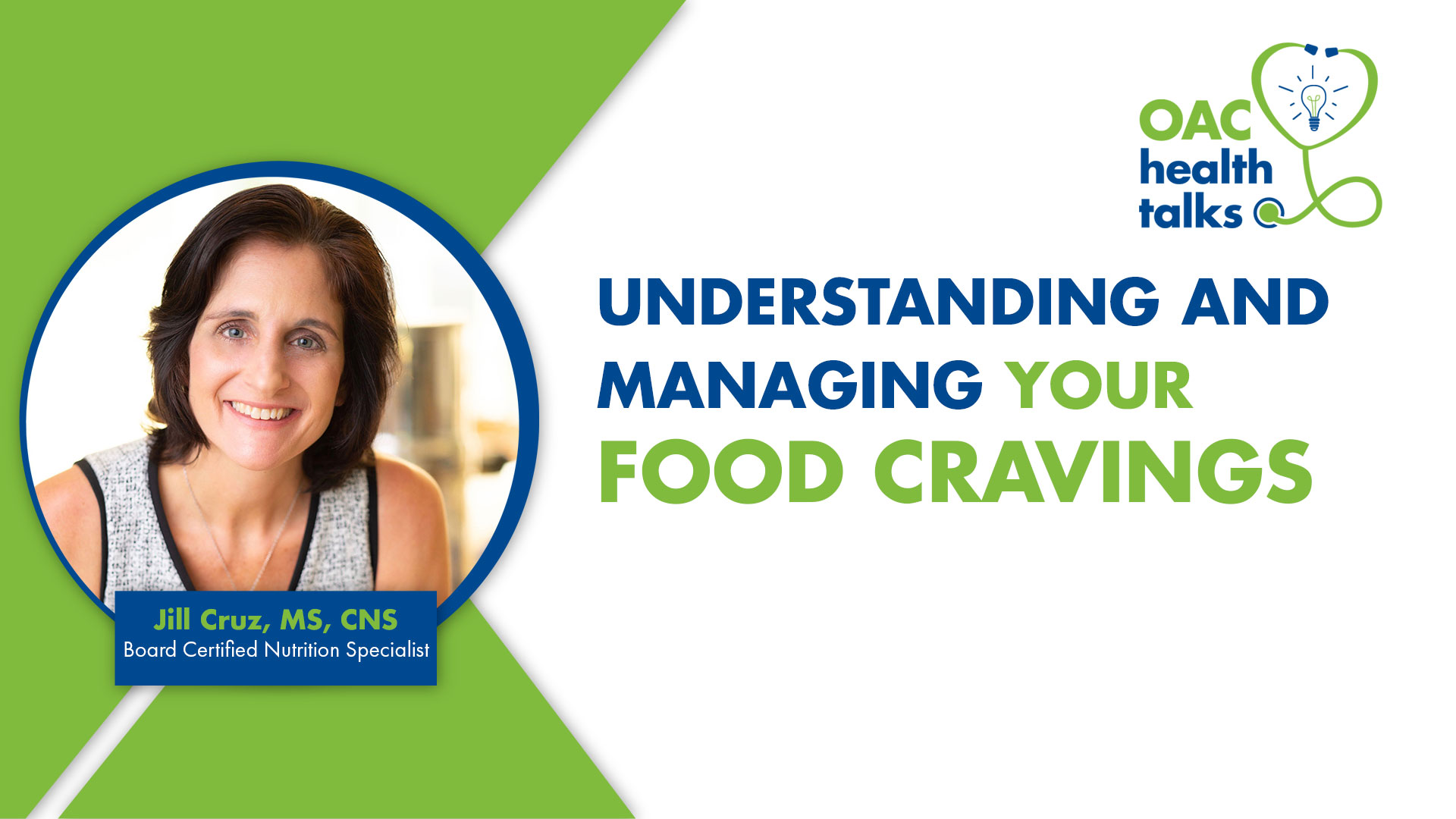Fast Food – Is it the Enemy?


by Sarah Muntel, RD
Spring 2012
Since 1970, the amount of fast food restaurants in business doubled, which equates to about 300,000 establishments in the United States. Coincidentally, 33.8 percent of the U.S. population is affected by obesity and 19 percent of children and adolescents are also affected. Could there be a link between fast food and obesity?
Is fast food to blame?
Let’s look at a few typical fast food menu items, which do not contain drinks or sides:
- McDonalds Big Mac: 540 calories and 29 g of fat
- Burger King Whopper: 670 calories and 40 g of fat
- Wendy’s Bacon Deluxe Double: 880 calories and 52 g of fat
- Taco Bell Nachos Bell Grande: 770 calories and 24 g of fat
Now let’s throw in the sides:
- Medium fries at McDonalds: 380 calories and 19 g of fat
- Onion rings at Dairy Queen: 360 calories and 16 g of fat
- Regular cole slaw at Popeye’s: 260 calories and 23 g of fat
And don’t forget the drinks:
- Large Frosty at Wendy’s: 540 calories and 8 g of fat
- Large sweet tea at McDonalds: 280 calories and 0 g of fat
- Iced Carmel Latte from Dunkin Donuts: 450 calories and 12 g of fat
These foods are highly processed, full of fat, calories and sodium. You could easily take in 1,500 calories from just one meal alone. Keep in mind that a general caloric recommendation for Americans is 1,500-1,800 calories per-day and around 50-60 grams of total fat. Choosing a typical fast food meal every day can lead to increased calories which can lead to weight gain and can lead to other health conditions like heart disease.
Could it be the environment?
Let’s think back to the pioneer days. People had to plant their crops, tend to their animals and cook foods from scratch. There were no box mixes or pre-made items. Meals had to be planned ahead every day. People really had to work for their food! Grab and go meals were unheard of! Coincidentally, the obesity rates were much less years ago.
Let’s now fast forward to today. You can find a fast food restaurant every time you turn the corner. You can choose from greasy burgers, crunchy tacos or a sugary drink at most intersections. It is not necessary to plan your meals ahead, cook or even shop because you have a variety of foods right there at your fingertips.
These quick and easy foods are also cheap, which appeals to so many Americans. You can order dollar cheeseburgers, dollar sodas and supersize items for just pennies. People see a value in cheap food and get it with fast food. People often claim it is cheaper to eat at a restaurant than prepare a meal at home.
Most Americans are overscheduled and overcommitted. They run from activity to activity and do not make time to plan or prepare meals. It is just too easy to grab fast food on the way home from work, or treat the kids to a thick milkshake after a busy day at soccer practice. Having fast food everywhere makes this very easy.
Unfortunately, people do not know the consequences of fast food. They are unaware how the extra fat in their diet can lead to cardiovascular disease. They do not realize the supersized fries may be the reason why their pants are tight. They forget the recommendation to eat a low sodium diet, so their blood pressure rises.
What’s the answer?
There is no easy answer. Obesity can be caused by a combination of fast food and the environment people live in today. Many Americans eat out every day! If that is you, make a plan to cut down and prepare a meal or two at home and see how it goes.
The key to this is planning ahead. It may take a little time to do this, but just start one day at a time. Think about your schedule in advance. Sit down on Sunday and determine what you have going on for the week. On your crazy days when you do not have extra time to prepare a meal in advance, have some quick healthy options ready to go:
- Sandwiches on whole grain bread with some low-fat yogurt
- Lettuce topped with grilled chicken
- Low-fat refried beans in a whole grain tortilla with a side of fruit
What Can You Eat When You Eat out?
Let’s face it, at some point in our life, we will all eat fast food. Try to make those visits few and far between. When you do go out, here are a few tips:
- Leave off the Sauces
Mayo and high-calorie sauces can add tons of calories to a sandwich. Make yours plain or add mustard, salsa or low-calorie dressing. - Substitute the Fries
You do not have to eat the fries. Lots of fast food restaurants now offer choices. Pick a salad, fruit or yogurt instead of fries. - Choose Calorie-free Drinks
Skip the sodas and go for water or a sugar-free beverage, like unsweetened tea or light lemonade. - Get it Grilled
Try a grilled chicken versus a fried chicken sandwich. Instead of chicken nuggets, try a hamburger. - Limit Portions
Portions are huge at restaurants. Cut your sandwich in half and save some for the next meal.
Make a Plan
Make a plan this month to limit fast food. You certainly do not have to cut it out altogether, but focus on small improvements as much as you can. Just by packing your lunch a few days a week, you can consume significantly less fat and calories. As it becomes easier for you, make more changes. Gradual changes can lead to a long healthy life.
About the Author:
Sarah Muntel, RD, is a registered dietitian with IU Health Bariatric & Medical Weight Loss. She has worked in bariatrics for the past 12 years and enjoys helping people get to a healthy weight so they can improve their health, feel better about themselves and become more active.
by Sarah Muntel, RD Spring 2024 Spring has sprung, bringing sunnier and warmer days! For many, this…
Read ArticleEating disorders can be a concern or question for many who are along the journey to improved…
View VideoWhy we crave certain foods can be difficult to understand. Between the different types of food cravings…
View Video









